Field report 29: CSA Drill Camp Released!
25/07 - 2016
Hello and welcome to our twenty-ninth field report!
Technical Alpha "The Drill Camp" Confederate update released!
Today we're excited to be able to inform you, that the first big update to our technical alpha has been released!
The update more than doubles the playable area of the Drill Camp as well as adds the Confederate camp along with 6 playable Confederate regiments,
rebindable controls, an advanced options menu and a number of general improvements to enhance the user experience of the technical alpha.
Today, the rest of our alpha tier backers (Captains to Major - Physical Editions) will also be granted access,
so remember to check the emails used to back us with for an invitation! We've released about 10 updates since the
first wave got access to the technical alpha nearly two months ago.
These updates have mostly consisted of fixes of critical bugs and issues but have had some content
in them as well such as an overhaul of faces, several new weapons, new hair and facial hair,
an updated freelook mechanic and a sixth playable US regiment. We are, however, still very much in an early state and thus new players,
or testers, should expect a lot of crashes, server instability, and bugs to be present.
Whenever you run into an issue, have a suggestion or just want to organize an event of drilling,
please don't hesitate to use the alpha section of the forum now available to backers starting at the Captain tier.
Below are a few screenshots of the new, Confederate part of the Drill Camp.









Playable Confederate Regiments
The Confederate update of the Drill Camp includes six playable regiments, with ranks Private, NCO, Flag Bearer & Officer.
1st Louisiana Zouaves
Also known as Wheat’s Tigers, this regiment of Zouaves was formed from the roughest of New Orleans society,
and even their own officers had trouble controlling them. Off the battlefield, they often took to drinking and roughhousing,
so much so that one Confederate wrote of them that “They neither fear God, man or the Devil.” Despite their leisurely proclivities,
the Tigers were unstoppable on the battlefield, though taking heavy losses in doing so.
The 500 men that began with the battalion were reduced to less than 100 when they were reorganized into several Louisiana units in August of 1862.
During the Maryland Campaign, some of the old "Wheat's Tigers" were transfered into the 1st Louisiana Zouaves Battalion, also known as Coppens' Zouaves.
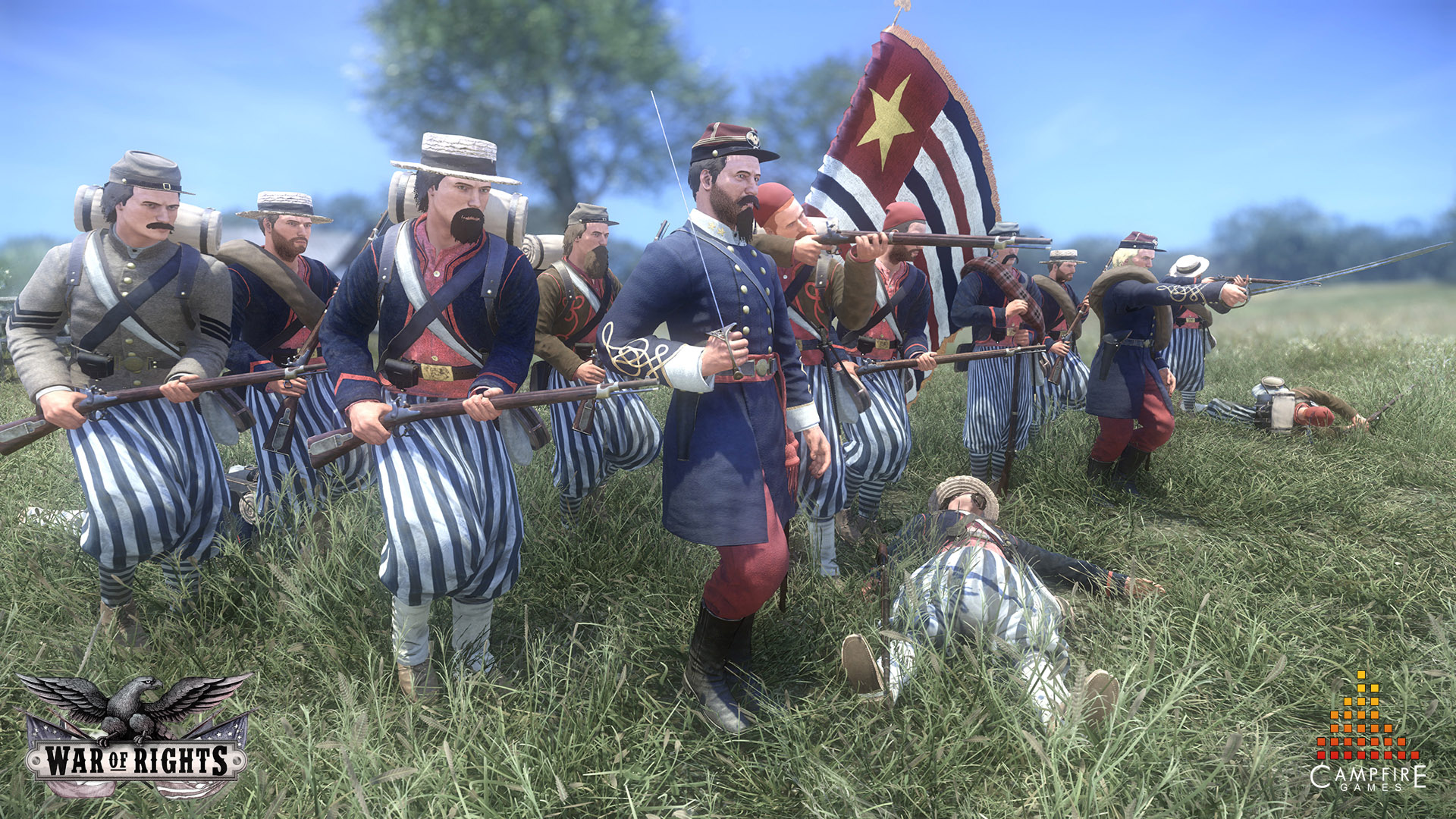
1st Texas
The ten companies’ worth of men came from Texas and organized in Richmond,
VA when the war began. From the battle of Seven Pines to Appomattox, the regiment served with distinction,
however suffering the worst losses of any regiment in the entire war due to their actions at Antietam.
After the Federals were pushed out of Miller’s Cornfield, they plunged in, and were subjected to heavy enfilading fire,
and 186 were lost of the 226 in the regiment, a casualty rate of 82%.
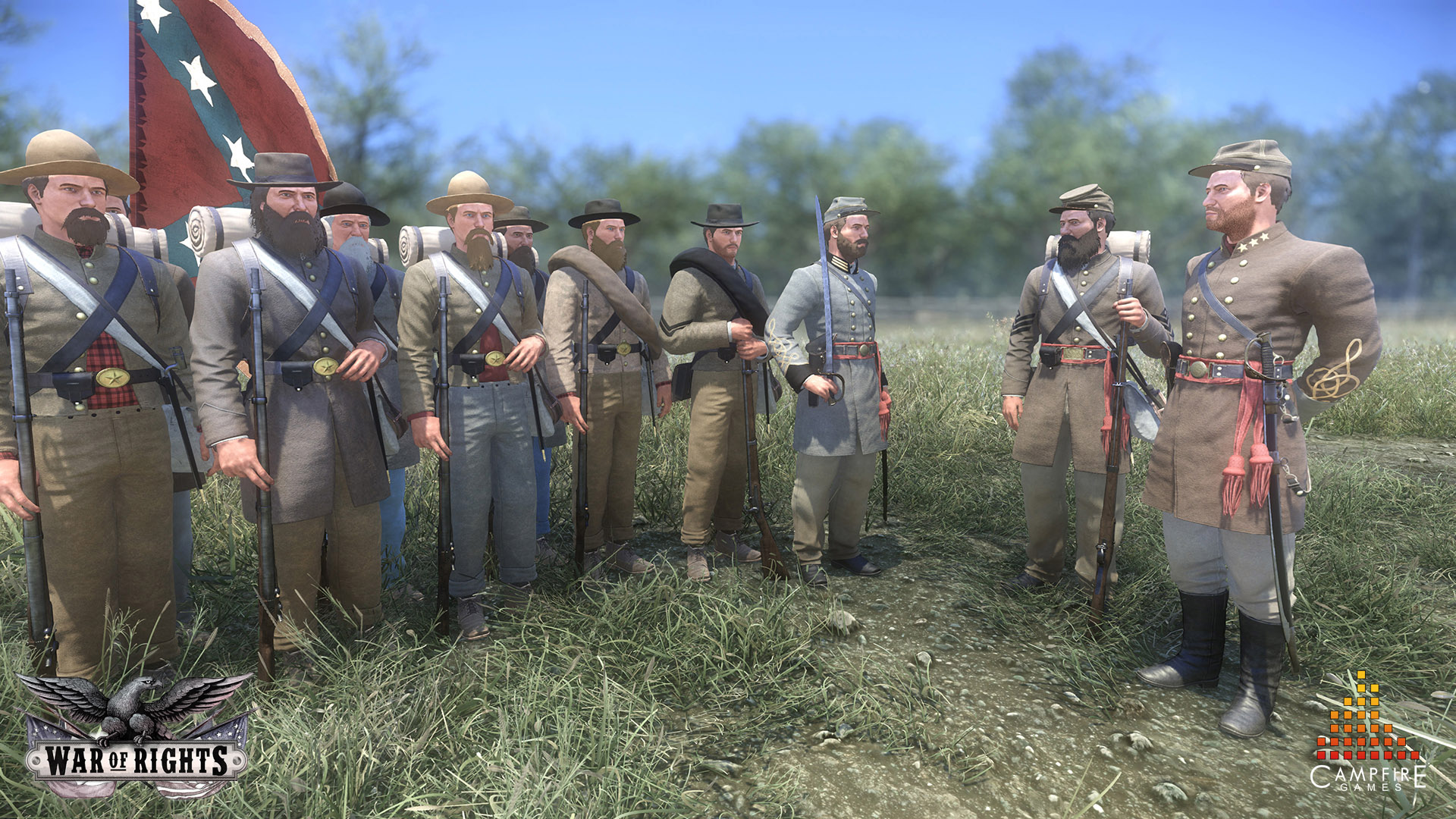
2nd Mississippi
The 2nd Mississippi were involved from the very beginning of the war, and were with General Bee when he made his rallying proclamation,
“Look, men! There is Jackson standing like a stone wall!” At the battle of Antietam,
the 2nd held a position on the left-most extreme of the Confederate Army on the Hagerstown Pike.
The natural attrition of war almost meant the destruction of the unit at the Wilderness were it not for the saving grace of darkness,
and again at the Siege of Petersburg when they were nearly surrounded, barely escaping with their flag across the creek called Hatcher’s Run.

6th Alabama
The 6th differed from most regiments in having not just ten, but twelve companies with 1400 men when they mustered for service in May of 1861,
also making up a majority of their brigades' total strength of 2500 men. They served in most every engagement from 1st
Bull Run/Manassas through to Appomattox, and at Antietam were posted in the bloody cesspit that the Bloody Lane became.
By the end of the war only four officers and eighty men were available to surrender their arms at Appomattox.
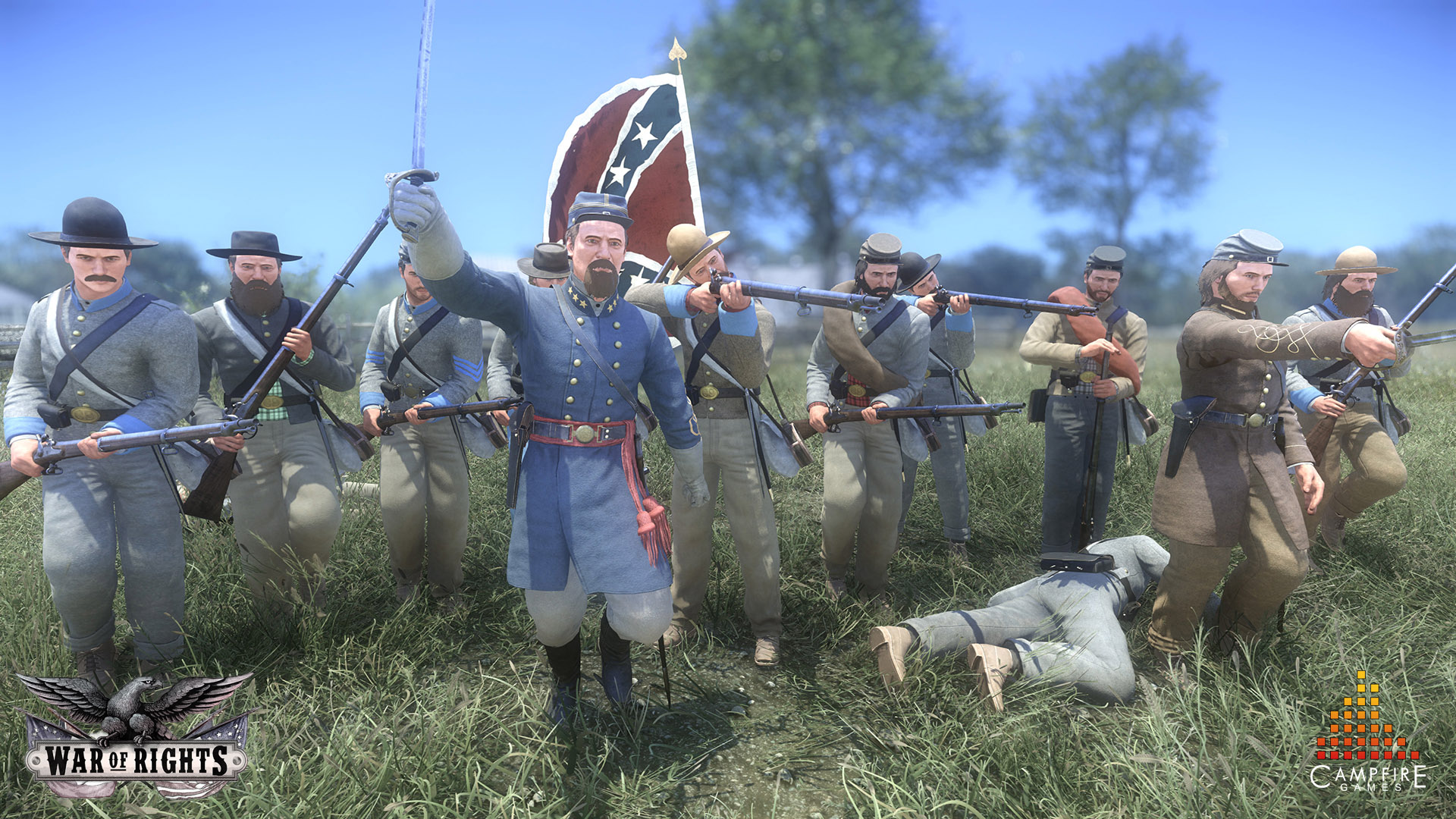
27th North Carolina
Originally formed as the 9th North Carolina, several months after it was reformed as the 27th,
and fought first at the battle of New Bern. The paltry losses of twenty-one men paled in comparison to the
losses at Antietam several months later, when the next roll call revealed two-hundred and fifty-three casualties.
It fought in many different battles after that, and by the time the war had drawn to a close,
only nine officers and one-hundred and three enlisted were present to surrender at Appomattox.
The Tar-Heel state in general fielded 125,000 men, however 40,000 weren’t able to make the trudge back home.
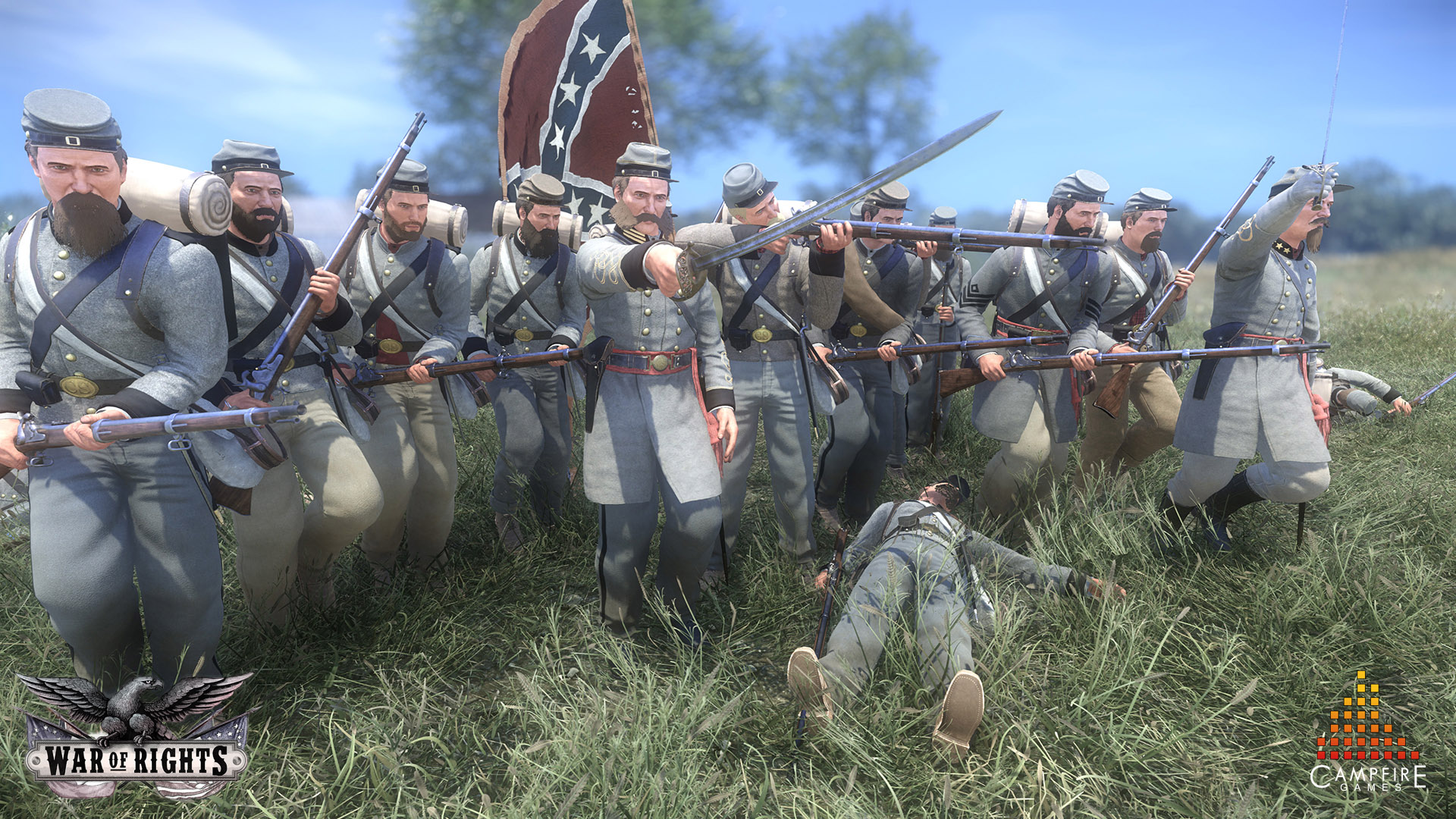
33rd Virginia
The 33rd Virginia Infantry were for the majority of the war proud members of the “Stonewall Brigade” up until
the restructuring of the army following Jackson’s death. Their wearing of blue uniforms at the battle of First Manassas/Bull Run
allowed them to capture a Federal battery, as the artillerymen mistook them for friendly troops. By the time of Antietam,
the regiment fought with only two-hundred men, and by Antietam was left with only nineteen, including one officer.
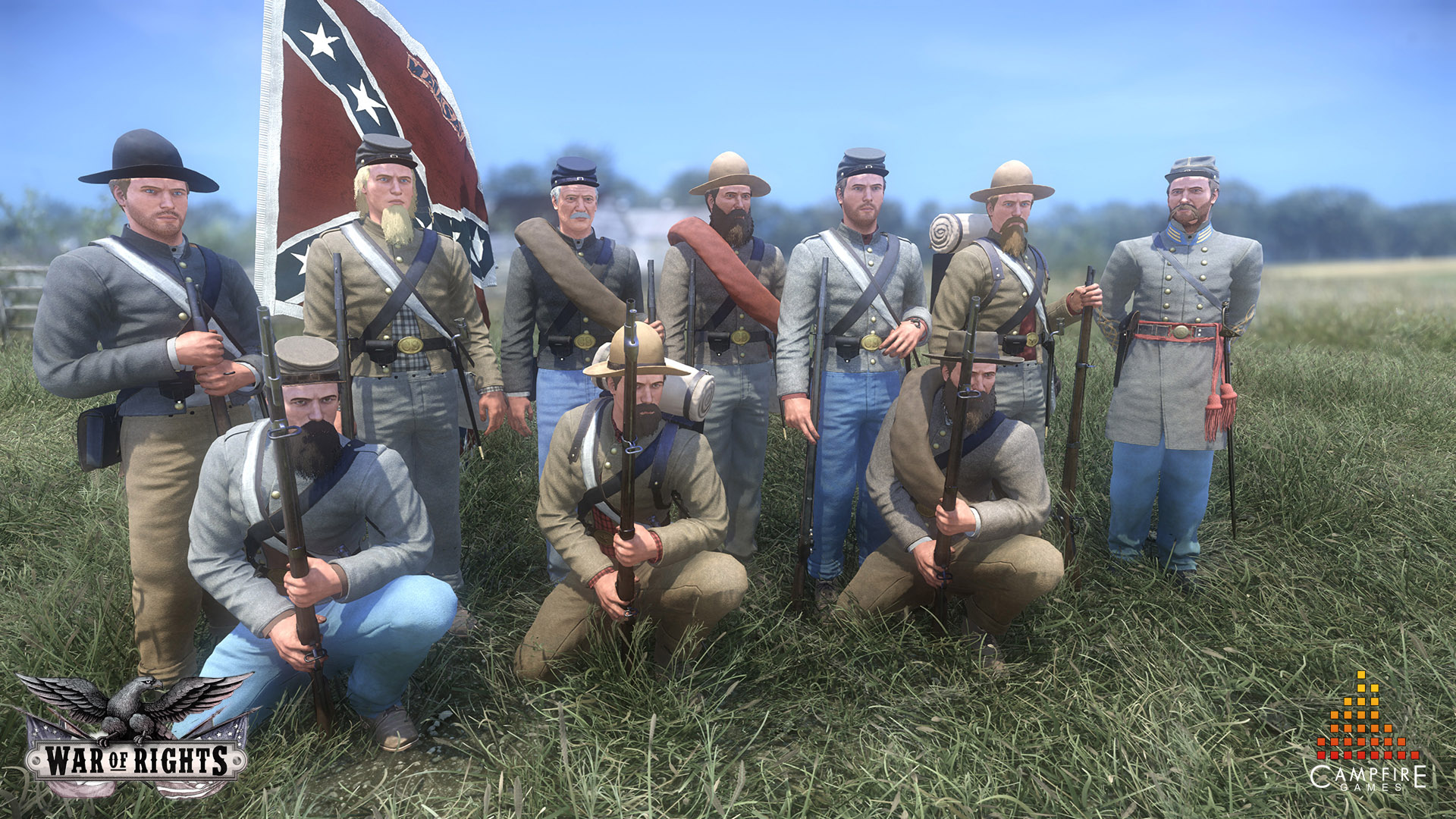
Weapons Spotlight
We've got quite the list of weapons to show to you today. The three Springfields are already in-game while the Colts are yet to be implemented. Enjoy!
Springfield Rifles & Muskets
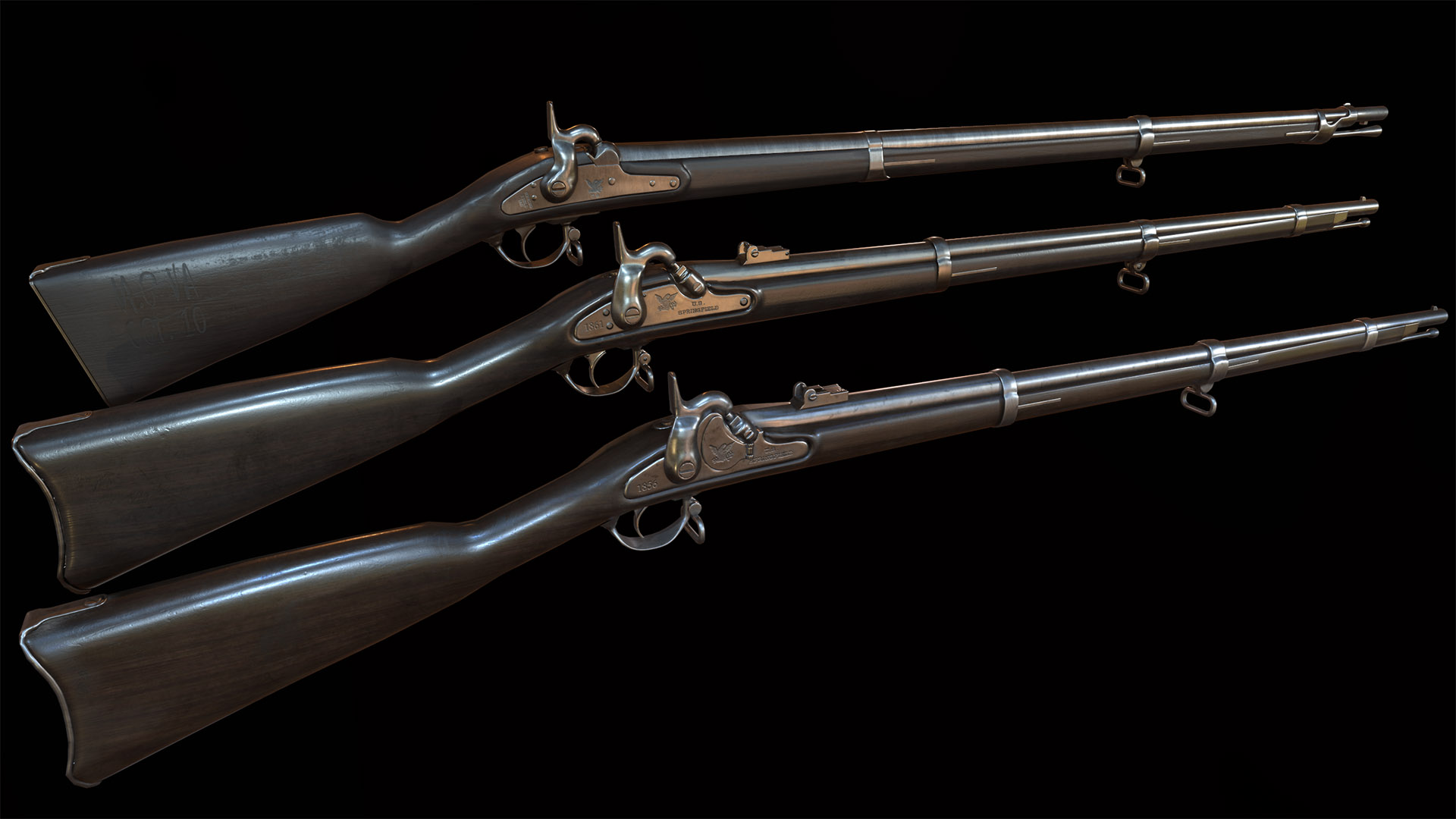
M1842 Springfield
The Model 1842 Springfield is much like the Civil War in that it was the last of the old ways and the first of the new.
It was the last smoothbore musket produced by the US armories, but it was also the first to use the new percussion system.
During the eleven-year span of its use, 275,000 were produced and distributed, and most were also purposefully made with a thick barrel.
The designers anticipated that the musket would get rifling bored into them, which did come to fruition once the Civil War came about.
When without this rifling however, as it was for much of its lifespan, the effective range was fifty to seventy-five yards,
though with a firing rate of two to three rounds a minute.

M1855 Springfield
With the enthusiasm of the industrial revolution, the US government wanted a weapon that could be one of the first repeating weapons able to be mass produced for their infantry.
Taking a cue from another popular weapon from the pre-war period, the M1855 Burnside Carbine,
they tried to use the Maynard Tape Priming system as a way to speed up the loading process. Unfortunately,
the Maynard Tape proved to be very unreliable, but it was only one part of the new improvements made to the US arsenal.
It was also rifled, and made in a smaller caliber of .58 rather than the M1842’s .69 caliber,
which meant it could take advantage of another new invention of the time, the Minie Ball. Approximately 60,000 were made,
but in 1861 the machinery at Harper’s Ferry that was used to produce it was captured by the Confederate forces,
and served as the basis for the production of the Richmond, and later Fayetteville Rifles. It had an effective range of 200-300 yards,
though could reach out to over 1,000 yards, and a firing rate of two to three rounds a minute.
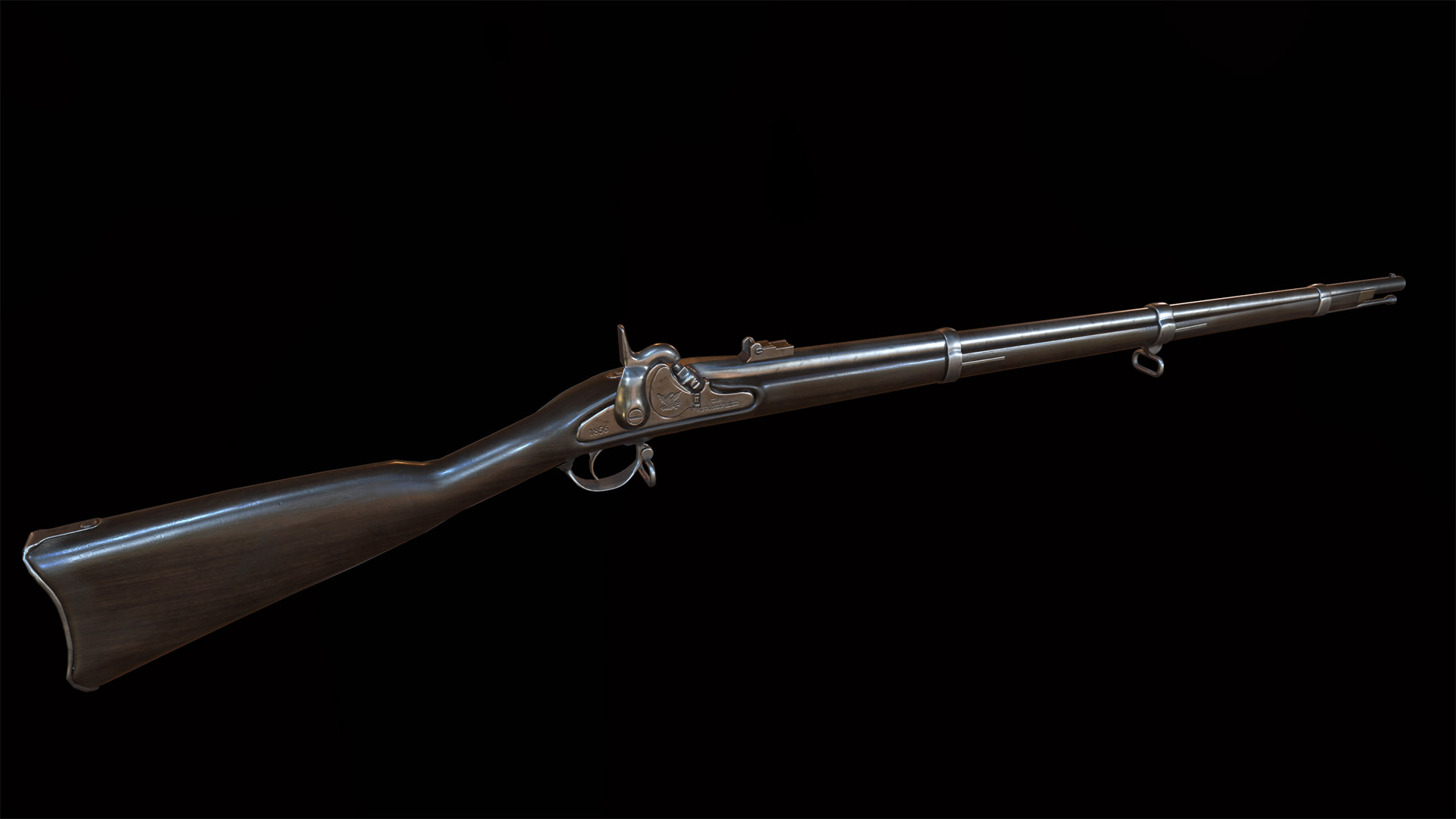
M1861 Springfield
The model that - along with the M1853 Enfield - seems ubiquitous when talking about infantry weapons in the Civil War,
was the Model 1861 Springfield .58 caliber Rifled-Musket. As per the terminology of the time, a Rifled-Musket was a weapon that A)
“Rifled” included the circling grooves on the inside of the barrel known as rifling, and B) “Musket” was able to take a bayonet.
Unlike the brief M1855 Springfield, it did away with the Maynard Percussion Tape priming system in favor of the original
percussion cap model as with the M1842. Over 1,000,000 were produced, and had an effective range of 100-400 yards,
with a firing rate of two to four rounds a minute depending on the training of the individual. It, along with the aforementioned Enfield,
were the two most-used weapons by the infantry of both sides during the War.

Colt Revolvers
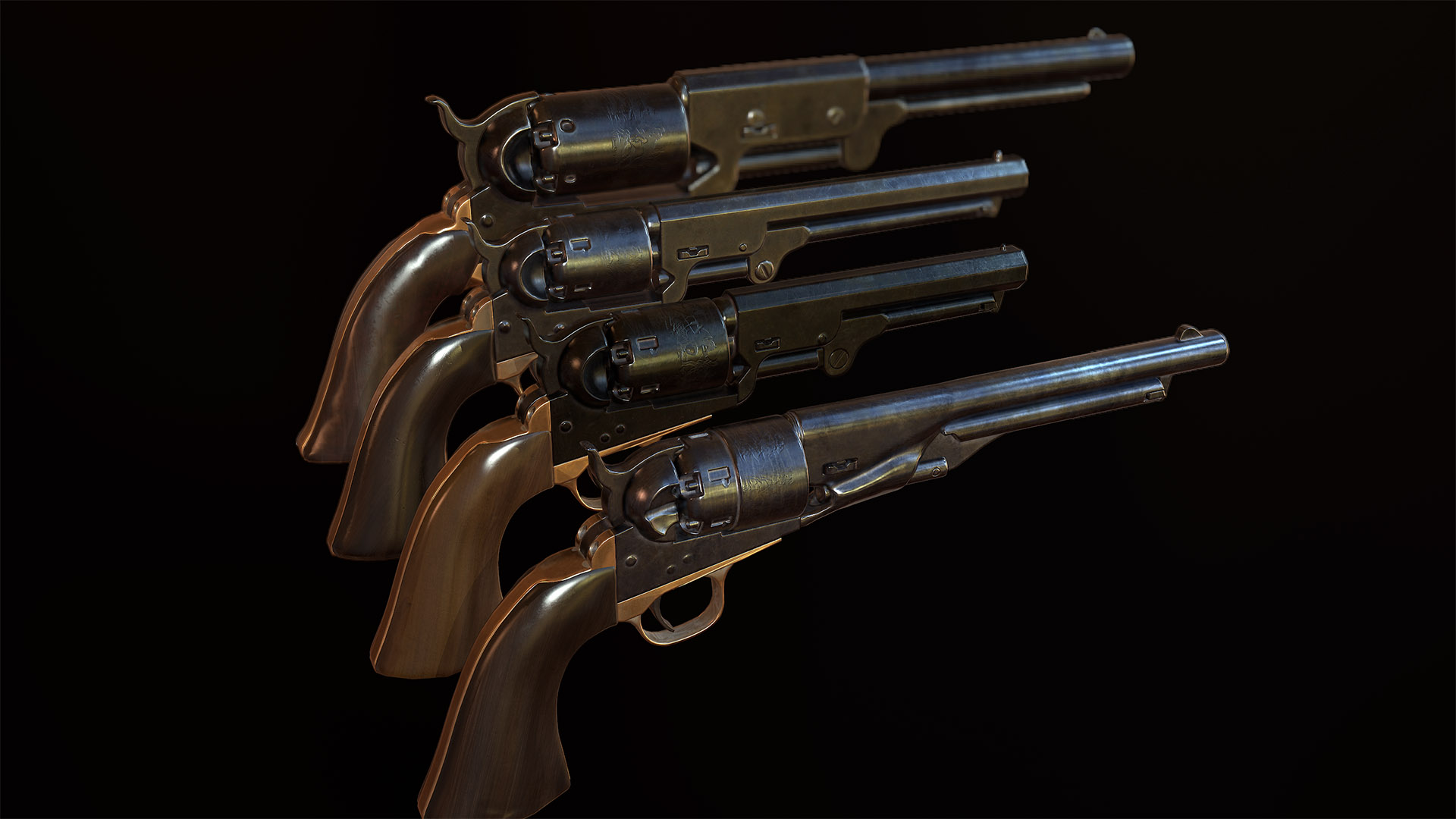
Colt M1847 Walker (Backer Reward)
The Colt dynasty of pistols and revolvers began first with the 1836 Paterson, however it was the Walker which brought Samuel Colt and
his inventions to the fore. First created from various suggestions made by Captain Samuel Walker of the Texas Volunteers,
the namesake then went on to use the revolver along with the rest of what had become the Texas Rangers.
It became a popular weapon during the Mexican-American War, especially because it was loaded with the same amount of powder
as a typical musket of the time. However, there were various problems that were found, including how the cylinder would sometimes
explode due to not being able to take the stress of such measures of powder. But it was from the Walker that the 1848 Dragoon Revolver was born.
Both were used during the time of the Civil War by both sides.

Colt M1849 Pocket
With the success of the Walker, Colt was able to ramp up production and invent even more designs to add to his arsenal as he also expanded his
production facilities into Europe during the mid-1850’s. Another popular addition was the various models of 1849 Pocket revolvers,
meant to be used for civilian use and able to be worn comfortably on a belt around the body rather than having to use a
saddle holster like with the larger predecessors. They became a popular arm within the ranks of officers as a last-ditch weapon should they be overrun.
Colt’s pocket revolvers were especially useful in such close ranges, since the effective range of the shorter barrels was around twenty-five yards.

Colt M1851 Navy
The 1851 Navy became effectively a larger-caliber and full-sized barrel version of the previous Pocket Revolvers,
but was also an incredibly popular weapon. Colt originally called it the Ranger model, however the name Navy quickly took over,
especially since the engraving by Waterman Ormsby which covered the cylinder with a naval battle scene from the Battle of Campeche.
This choice of decoration was in reference to the Texas Navy, his first customers when they bought 1,000 of his Colt Paterson revolvers.
Despite this history and the designation, it was mainly used by civilians and by the Army,
especially again with officers for personal defense use against close-quarter enemies.
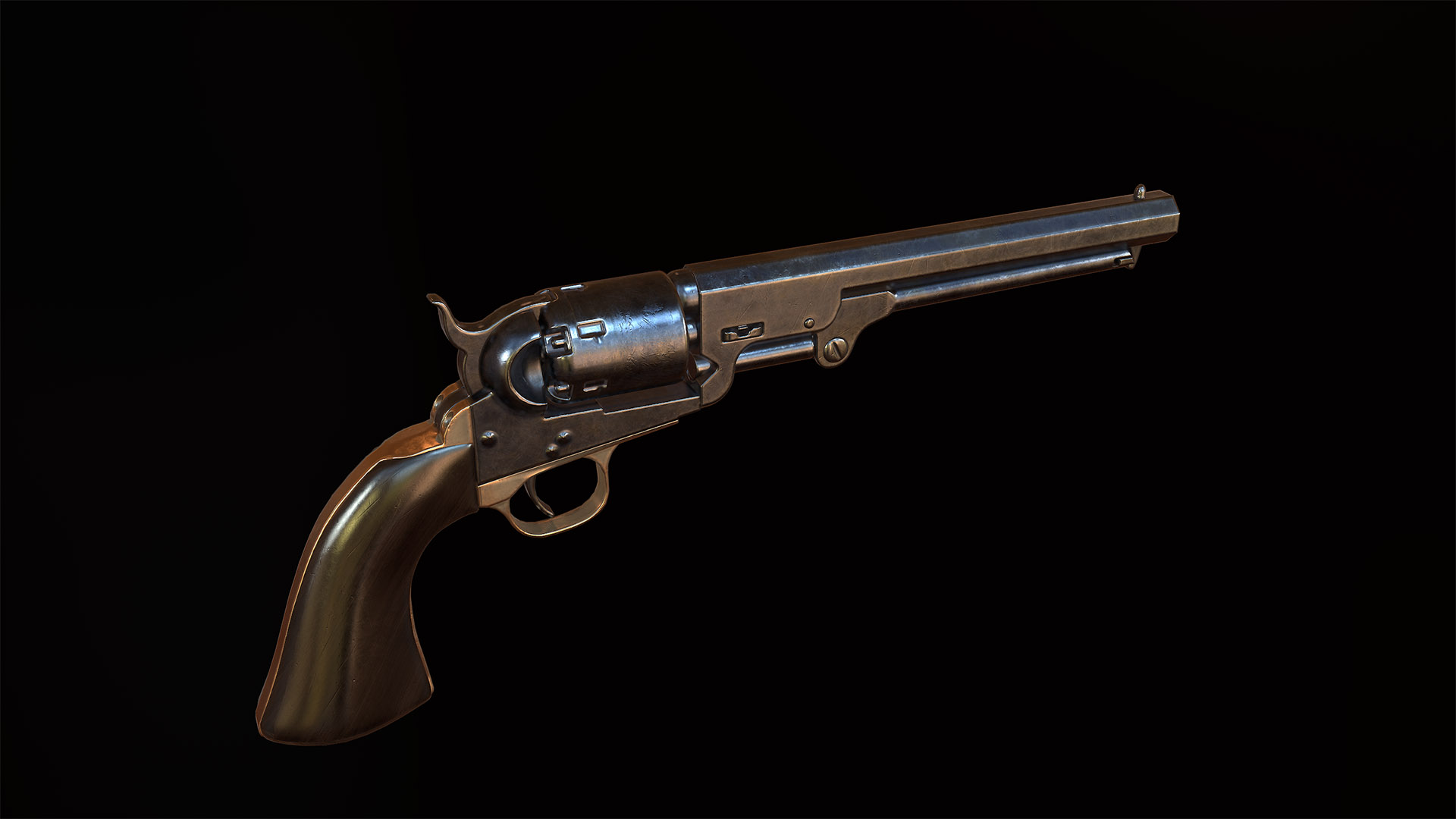
Colt M1860 Army
One of the most popular revolvers produced by Colt during his early career was in the form of the M1860 Colt revolver,
following the Dragoon model in being a .44 caliber. The main form of its success was due to Colt’s monopoly with the US War Department
in issuance to the troops, but it was used by all branches of the Army, by the Navy, as well as by civilians.
It also continued to be produced for twelve years by the company itself between 1860 and 1872,
when the iconic 1873 Colt Single Action Army revolver took over.
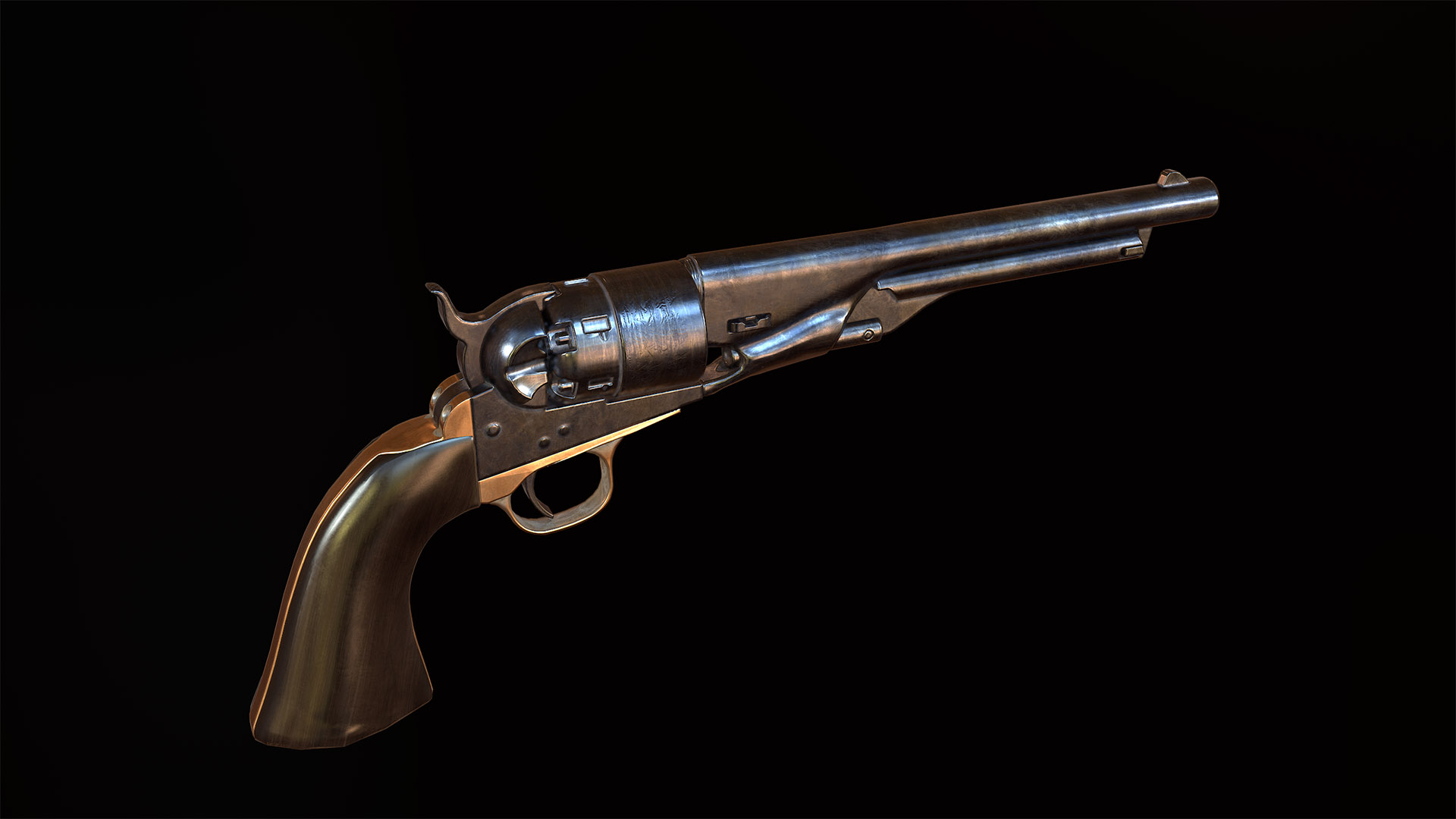
Updated Character Faces, Hair & Facial Hair
The faces, hairstyles and facial hair is currently in the process of being updated. Below are a few variations up close for a better view.
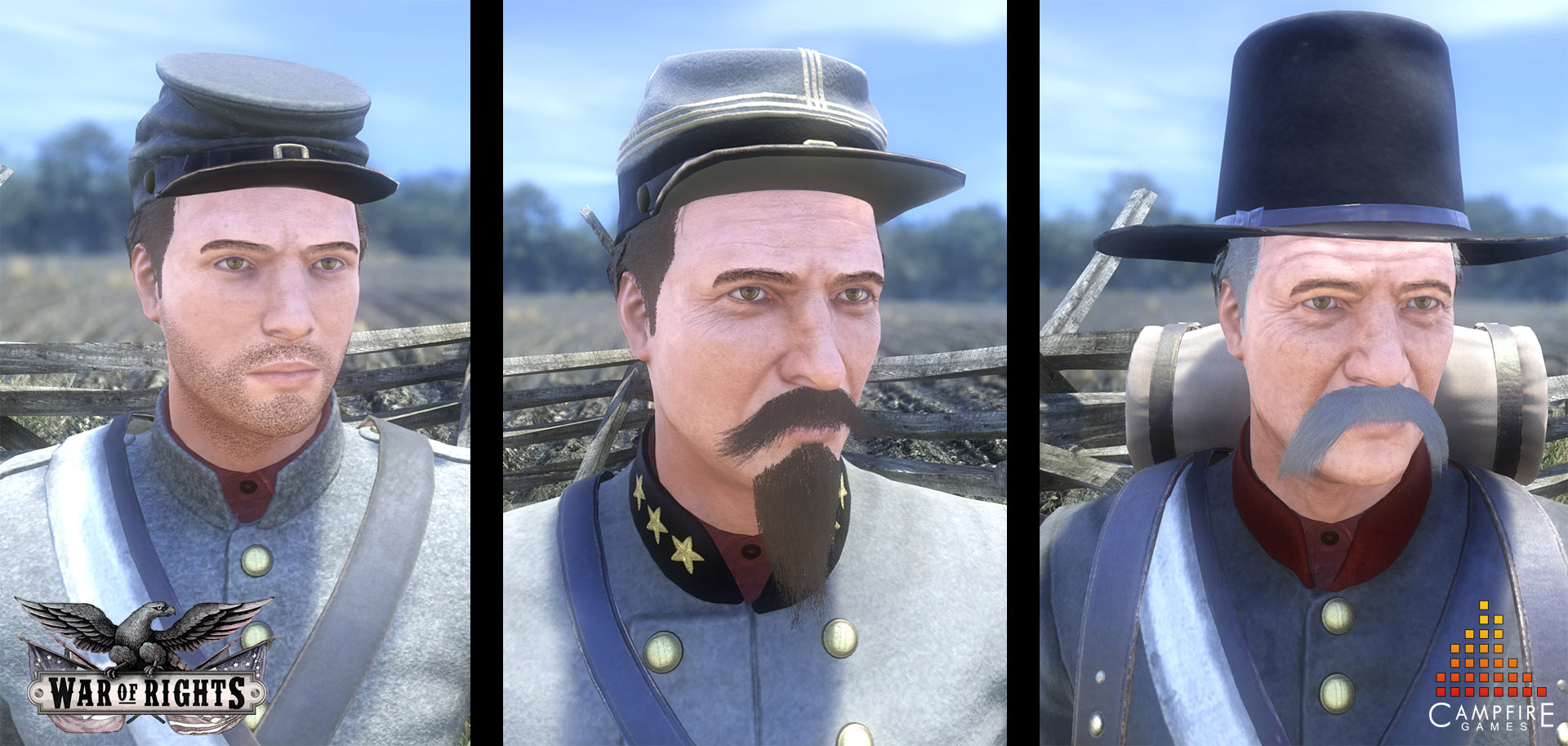
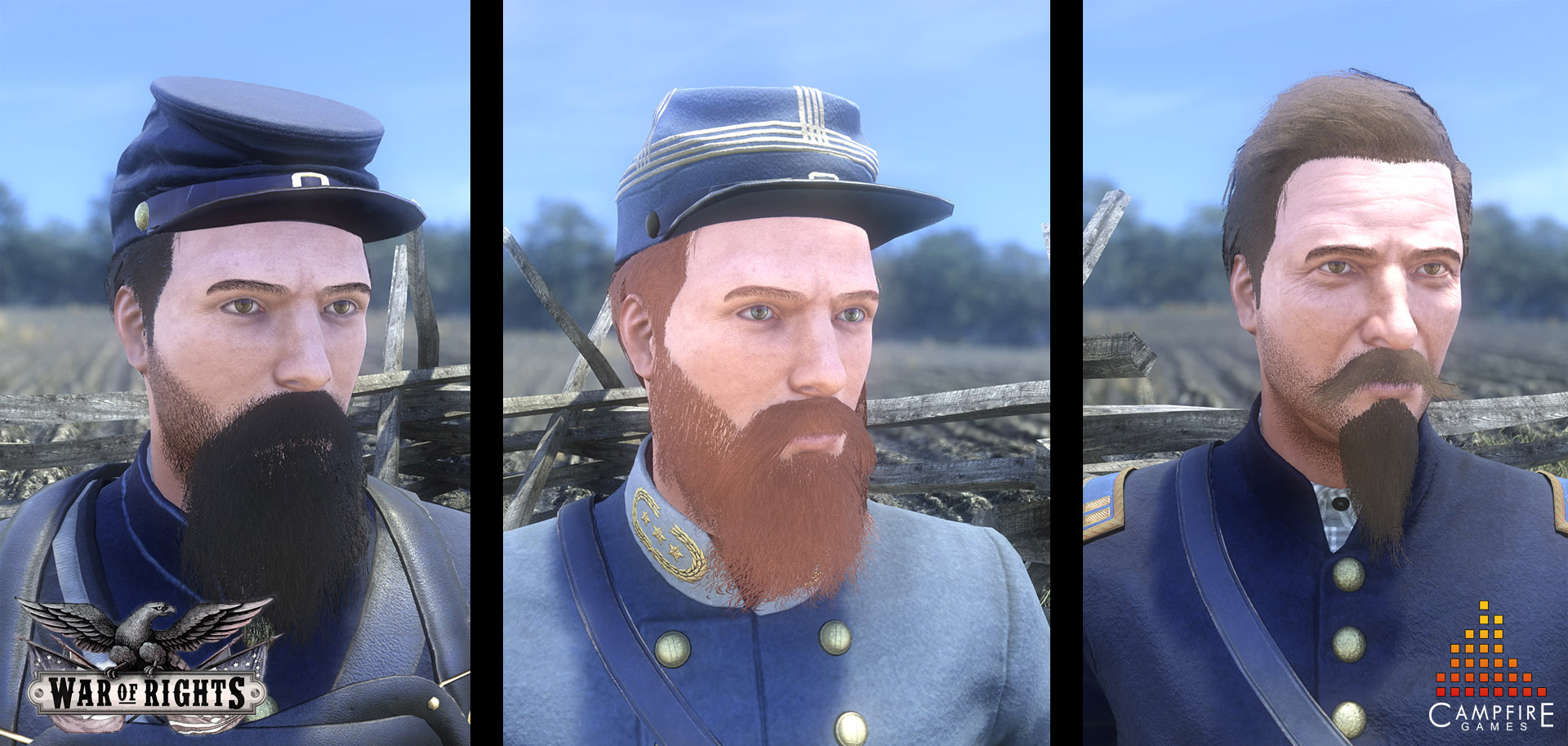
Battlefield Research Trip
For this year's vacation, part of the Campfire Games development team (Weapons Artist, Historical
Advisor & the two Co-Founders) decided to spend it travelling to the east coast of the great United States.
It was in order to experience the battlefields we're covering in the game in person,
as well as visiting a bunch more for possible future references.
Visiting Harper's Ferry and especially Antietam felt almost like being home,
knowing exactly where every major location or structure was thanks to our work on those levels for the game. A very nice feeling indeed!

Walking down Hagerstown Turnpike towards Dunker Church at Antietam National Battlefield.
-
Washington D.C.
-
Battlefield of Harper's Ferry
-
Battlefield of Gettysburg
-
Battlefield of South Mountain
-
Battlefield of Antietam or Sharpsburg
-
Frederick
-
Sharpsburg
-
Battlefield of Monocasy
-
Battlefield of Shepherdstown
-
Richmond
-
Siege of Petersburg
-
City Point
-
Battlefield of Fredericksburg
-
Battlefield of Chancellorsville
-
Battlefield of The Wilderness
-
Battlefield of Spotsylvania Courthouse
-
Battlefield of 1st & 2nd Manassas or Bull Run

Headed towards Roulette farmhouse and barn at Antietam National Battlefield.
A number of museums such as the Smithsonian, the Tredegar Iron works and the CSA White House as well as the museums
located in the visitors centers on all of the battlefields were visited as well.
Libraries at Boonsboro, Richmond & Antietam were also visited in the data collecting process.
These and the museums provided an almost unlimited amount of excellent artifacts to be documented and used as references
in the development of the game.
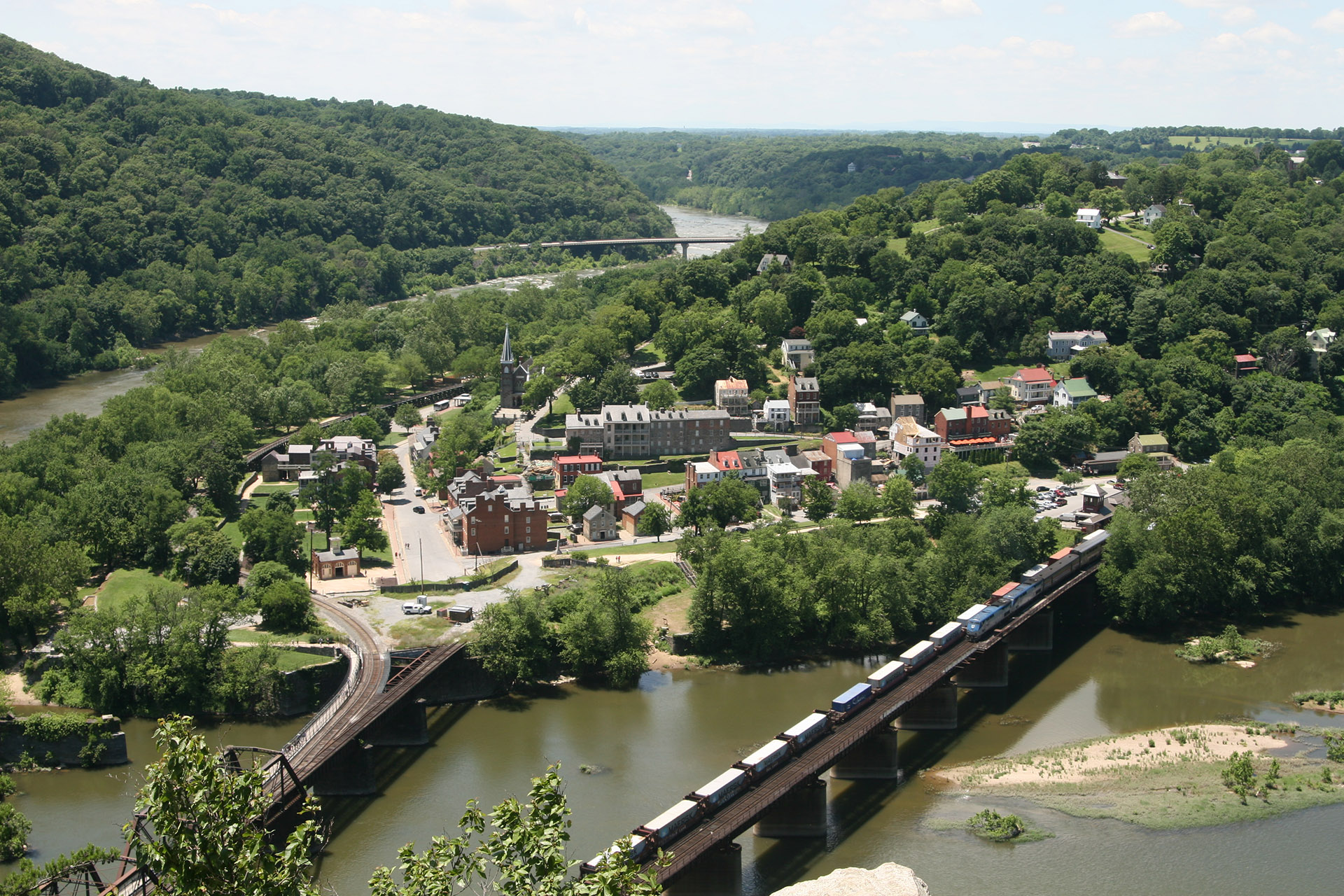
Overlooking Harper's Ferry, Loudoun & Bolivar Heights from Maryland Heights.
catch (Exception) { } finally, we were lucky enough to be invited to be part of the yearly Gettysburg Reenactment
(the very first reenactment for most of the developers) on the 2nd day by the 97th Pennsylvania.
It was truely an eye opening experience so a very big thank you to the unit for letting us join and
allow us to borrow enough gear to, at least somewhat, look like Union soldiers.
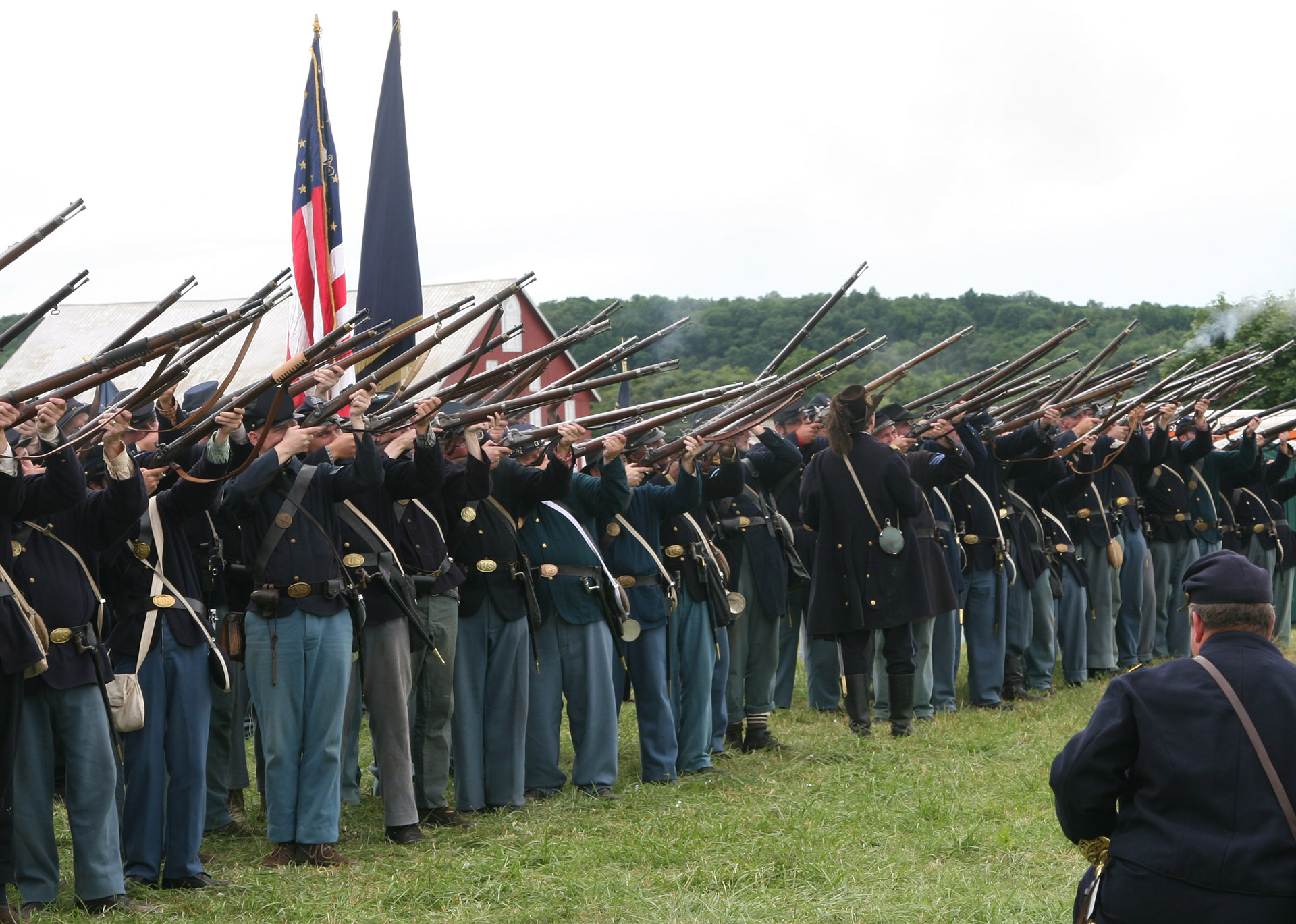
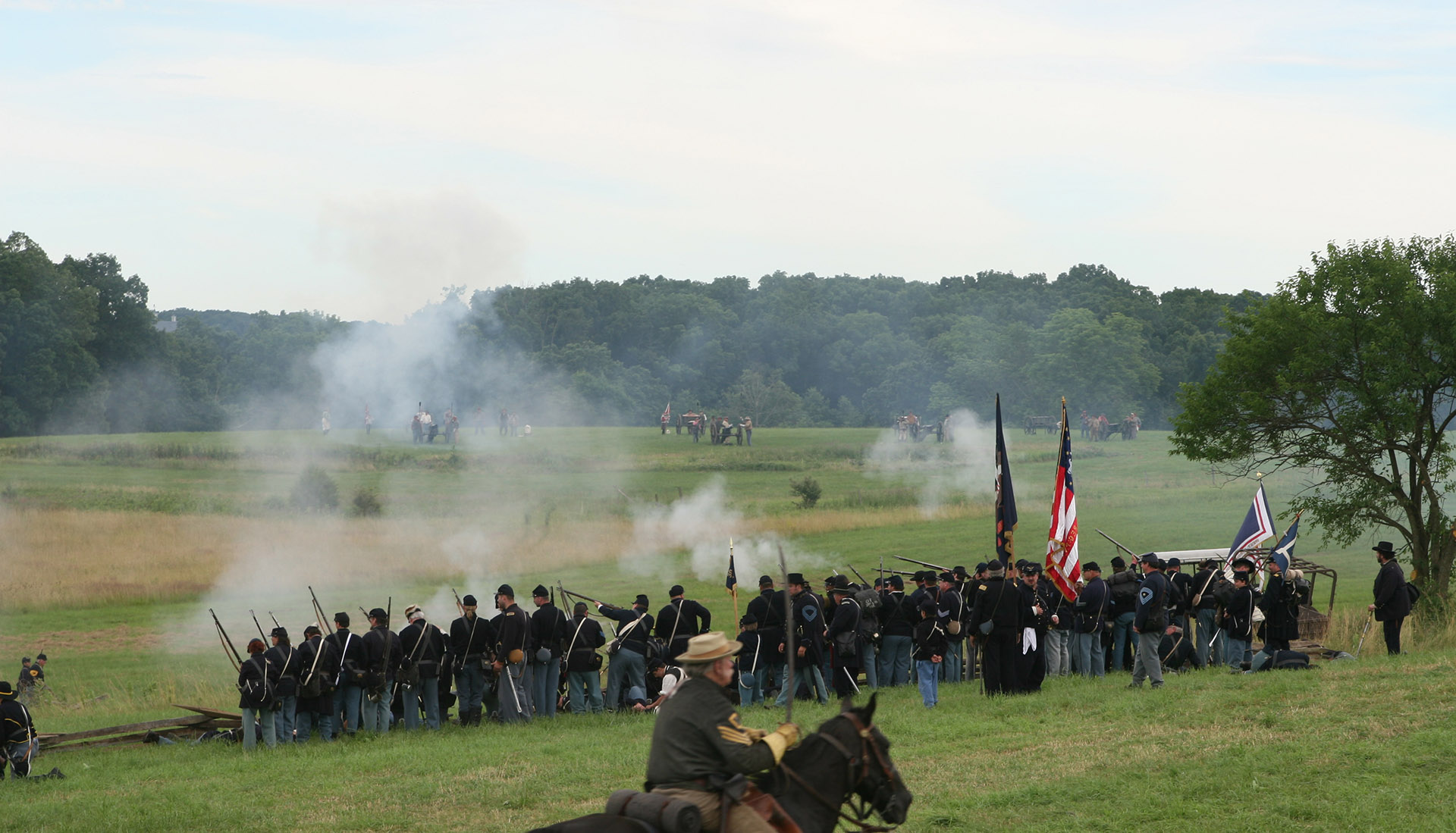
At the 2nd day of the Gettysburg reenactment. Can you spot the Campfire delegation?
All in all more than 5000 photographs were taken, audio references captured, 4 hours of video and more than a dozen on-site small
films were shot of our Historical Advisor, GeorgeCrecy. All of which we'll be showcasing in several field reports in the future.
Here's the first video of George, this time at the Sunken Road or Bloody Lane at Antietam. We apologize for the sound issues related
to the wind from time to time in the videos – most of the recordings were done rather quickly in order to spend the majority of the time looking at,
and documenting, the battlefields rather than George's face. We hope you'll enjoy the series!
The trip has provided us with far more than "just" the best possible references, however.
We've already come up with several game mechanic additions that will push War of Rights even
closer to authenticity thanks to the trip – more about some of those changes in the future.
That's all for now. We hope you'll all enjoy the Confederate Update and the rest of the vacation season! Until next time, have a good one.